new posts in all blogs
Viewing: Blog Posts Tagged with: Mira Reisberg, Most Recent at Top [Help]
Results 1 - 10 of 10
How to use this Page
You are viewing the most recent posts tagged with the words: Mira Reisberg in the JacketFlap blog reader. What is a tag? Think of a tag as a keyword or category label. Tags can both help you find posts on JacketFlap.com as well as provide an easy way for you to "remember" and classify posts for later recall. Try adding a tag yourself by clicking "Add a tag" below a post's header. Scroll down through the list of Recent Posts in the left column and click on a post title that sounds interesting. You can view all posts from a specific blog by clicking the Blog name in the right column, or you can click a 'More Posts from this Blog' link in any individual post.
I just won a scholarship to the Craft and Business of Writing Children's Picture Books class through the Children's Book Academy. I've been happy dancing since I heard the great news! The class is taught by Random House editor Kelly Delaney and Mira Reisberg, and includes 25+ guest experts, worksheets and templates, and critiquing webinars. Plus, there will be Golden Ticket opportunities to submit directly to an agent or editor and bypass the slush pile or closed house submission policy. I can't wait to start this class at the end of the month!
I shared my news on Facebook and loved celebrating with everyone—then realized that it would be great to keep the celebration going by paying my good luck forward and helping someone else. I’m so grateful for this opportunity, and decided to give away a free picture book critique (or up to 5 pages of an MG or YA). When I asked Mira, she loved the idea, and then generously offered to give away a picture book critique. So click on the Rafflecopter widget below and enter for your chance to win a critique with Mira or me.

If you attend Mira’s free webinar on Friday night, June 19, at 8:30 pm EST, you’ll have the chance to win a picture book critique with Random House editor Kelly Delaney. I’m definitely going to be there. It’s called: Finding Your Writer's Voice, Finding Your Characters' Voices. It’ll help you learn what a writer’s voice is and how to develop yours and see how characters' voices are a part of your writer's voice. Plus, you’ll have the chance to connect with a Random House editor who is actively looking to acquire great picture books.
This scholarship came at the perfect time for me. I'm usually a very prolific writer (I actually wrote the first draft of one of my novels in 11 days during NaNoWriMo and wrote the first draft of nine picture books during the seven days of NaPiBoWriWee one year)...but because of health issues with my daughters, I haven't been as productive as usual. I also tend to give my novels more attention and my picture books have been begging me to do something like this for a while. I've had some interest in my picture books, but something always seems to hold them back from getting that magical yes. I'm hopeful that this awesome interactive online class will help me make my picture books sparkle enough to dazzle editors, agents, and future readers.
I've seen so many raves about this class. Some online friends have said that it's 'life-changing, the equivalent of 20 conferences, and better than complete MFA programs'. Thank you so much for giving me a scholarship, Mira! I don't often talk about my disability, but I've had about 70% hearing loss in both ears since I was 35 and have had to wear hearing aids since then. I'd love the chance to make all of my picture books shine, and would especially love to get my PB, Sound Detective, published one day. I’ll never forget what it felt like to realize how bad my hearing had gotten, and that I’d have to wear hearing aids for the rest of my life. I was horrified at first, but quickly changed my mind when I realized all the amazing sounds I had been missing, and how much easier it is to interact with people with my hearing aids in. I was surprised to see that there aren’t many books for children that have a character with hearing loss, and I’d love to use my experience to help children going through something similar—and also help raise more awareness in others.
Good luck to everyone entering for a free critique! I’ll announce the winners on Friday. LiveJournal often doesn't show the Rafflecopter widget, so if you don't see it below, click here to enter! a Rafflecopter giveaway
Don’t forget about the #PBPitch Twitter party on Wednesday, June 24th. It’s a great opportunity to pitch your completed and polished picture books online to agents and editors. Definitely check out their website—in addition to info about the fun pitch contest, they have a list of 100+ agents who rep picture books!
by Hillary Homzie and Mira Reisberg
You have an idea for a book! Yahoo! It’s one of those ideas that hits you so deep in your gut that you immediately scribble it into a little notebook. Your stomach bubbles, not in an indigestion sort of way, but in a nervous-happy–giving-birth-to-a-germ-of-an-idea way. So how do you know if the idea is really picture book idea? What if it’s actually a chapter book or a middle grade novel, how do you know?
Well, you don’t. Not right away.
Of course, there are the obvious tip-offs that your idea is not a picture book. Take your idea through this list and see how it stacks up.
- Age of the protagonist.
These days picture books are generally geared for ages 2-7, although there are still picture books geared towards older elementary school, especially in nonfiction. Still, there’s no question that picture books are skewing younger with shorter word counts. If your primary character is in first through third grade (or ages 6-9), and is longer than 700 words, chances are you have a chapter book. And if your character is a fourth or fifth grader, chances are you have a younger middle grade novel (for ages 9-10). Now sometimes, often, older chapter books overlap with middle grade. Is Stuart Little an illustrated chapter book or an early middle grade? There is no hard and fast answer here, especially since the term chapter book has often been used in a general way to indicate a book for elementary school children that has chapters. However, often in publishing when we say chapter book, we often mean an early chapter book. Think Magic Tree House, Junie B. Jones or Geronimo Stilton. Of course, exceptions apply in everything (and really, would it be any fun if there weren’t?). But read on to help you determine where your idea fits best.

- Interest of the main character.
Is your main character interested in something that will be appealing to younger children? E.g. If you’re story is about a child who’s excited about writing cursive, this means the main character is probably eight, and chances are it’s a chapter book story. If you’re an author/illustrator who has created lots of charming or edgy black and white illustrations to go with the story, chances are it’s a chapter book. Early middle grade books are also starting to feature illustrations more. This is great news for illustrators.

Page from “Notebook of Doom” chapter book series by Troy Cummings
- Period of time.
Does your story occur over a year? Six months? You may have a chapter book or young middle grade on your hands. Now there are exceptions, picture books such as Diary of a Worm, which chronicles a character over a large period of time, or nonfiction picture books that occur over a long time like biographies. The majority of contemporary picture books take place over a brief period of time, while chapter or middle grade books usually have the luxury of taking their time with a story.
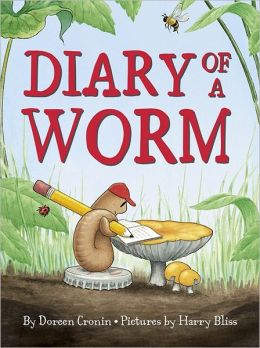
- Type of protagonist.
Are your main characters animals or personified objects? Chances are it’s either a picture book or an early chapter book. Older kids generally want to look more sophisticated with “grown-up” books, but of course there are always exceptions, like the fresh middle grade graphic novel Low Riders in Space, which features a dog, an octopus, and a mosquito as main characters.

Generally, if you like writing really short manuscripts with simple plots, often with animal characters on topics of interest for very young kids, you’re a picture book person. If you like the luxury of time and space for writing slightly longer books (from 1500 to 15,000 words) that still have pictures for slightly older kids ages 6-9, with or without animal characters, then you’re a chapter book writer (or maybe even an early reader person, but that’s a post for another day). And if you like much more complex plot lines, much longer storytelling, stories for early middle school kids, then you have an older middle grade idea.
So…what kind of ideas do you have?
Bonus info: Mira and Hillary will be co-teaching an outrageously fabulous interactive e-Course, the Chapter Book Alchemist, starting January 12th. Together and with the help of Mandy Yates, they make it ridiculously easy to write a chapter book or early middle grade during the 5 fun-filled weeks. The course features optional critique groups, weekly live webinar critiques, lots of lessons and exercises, the option for critiques with Mira or Hillary (with a free Scrivener course) and Golden Ticket opportunities to submit directly to agents and editors. Click here to find out more about this once-in-a-lifetime adventure with potential life and career changing benefits! Click here to find out more.

Hillary Homzie photo by Suzanne Bronk
Hillary Homzie is the author of the chapter book series, Alien Clones From Outer Space as well as the middle grade novels, Things Are Gonna Get Ugly, The Hot List, and Karma Cooper Unplugged (forthcoming). Some of her books are currently being made into an animated television series. Hillary teaches in the graduate M.F.A. program in children’s writing at Hollins University as well as for the Children’s Book Academy. She is also a former stand up comedienne. Visit her at HillaryHomzie.com.
 Mira Reisberg is an award-winning children’s book creative, a former kidlit university professor and a former literary agent. She is also the Director of the Children’s Book Academy and has taught many now highly successful authors and illustrators. Visit her at childrensbookacademy.com.
Mira Reisberg is an award-winning children’s book creative, a former kidlit university professor and a former literary agent. She is also the Director of the Children’s Book Academy and has taught many now highly successful authors and illustrators. Visit her at childrensbookacademy.com.



By: Kathy Temean,
on 12/21/2014
Blog:
Writing and Illustrating
(
Login to Add to MyJacketFlap)
JacketFlap tags:
Critiquing Secrets,
Free Chapter Book Webinar,
Tips,
list,
Advice,
chapter books,
article,
opportunity,
Mira Reisberg,
Free critique,
Hillary Homzie,
Add a tag
Interested in writing a Chapter Book? Don’t miss this FREE WEBINAR with Hillary Homzie and Mira Reisberg on Friday January 2nd 2015 at 5.30pm PST! They are also going to give some late holiday presents for some lucky folks that include a free critique with Hillary or Mira and some free signed books. Wahoo! See more at: http://www.childrensbookacademy.com/free-novel-writing-webinar.html#sthash.aEum3YJW.dpuf
 Mira is my Guest blogger for today’s post. Here’s Mira:
Mira is my Guest blogger for today’s post. Here’s Mira:
Critiquing Secrets by Mira Reisberg
First of all, thank you Kathy for having me on your fabulous blog. This site has been such a great resource for our community for a long time and I feel honored to be here. As we come to the end of the year, it seems like a good time to reflect on what we did to better our craft and improve our skills as people who create children’s books. Personally, I think it comes down to three things: take courses (i.e. study and improve your craft and keep revising), join the Society of Children’s Book Authors and Illustrators, and join and participate in a critique group. For this post, I’d like to talk a little about critiquing and then share some critiquing secrets.
Over the past 26 years as an illustrator, author, editor, art director and former literary agent, I’ve learned that although your work is uniquely your own, you can’t exist in a vacuum. Receiving criticism from fellow writers or illustrators, and peers is a must have regular part of your creative process.
So let’s talk about the secrets of critiquing for plot-driven books.
After struggling with a piece, if you can, let it percolate for a while and then come back not only with a fresh eye, but with fresh sets of eyes. Other eyes may see what you have missed, offer a different perspective, and question what you have taken for granted.
While you may be tempted to have your mother, your significant other, or best friend critique your work, they should not be your only ‘eyes’. They’re not trained to critique, may not understand your work, and may try to protect your feelings, regardless of their true opinion.
So what are some great critique techniques? For plot-driven writers the main things you need to look for are:
• How enticing is the hook or beginning?
• Do we care or are we intrigued by the character(s) enough to want to find out more about them and their journey?
• Does the tension build as the main character faces challenges and obstacles along the way?
• Do they solve the problem themselves?
• Is the climax and resolution satisfying with a twist at the end?
• Is each character different with their own distinct voice?
• What makes this particular story memorable?
• Does it have any underlying universal themes that are meaningful for kids?
• How can the drama, humor, pathos, or whatever key feeling the story has, be amplified?
• Does the pacing move at a good speed or does it slow down anywhere? Is there redundancy or excess?
• And finally does the language sparkle with techniques like alliteration and assonance, rhythm and repetition where appropriate?
All of these suggestions will help you in the critiquing process to get to the core and heart of your story to make it stronger, sweeter, funnier, or whatever its essence more appealing and thus more marketable.
Finally, for tender newer critique groups or critiquing partners who are vulnerable, remember to use the hamburger technique of starting and ending with something positive and getting to the meat of what needs help in the middle. As creatives, we tend to be a little thin skinned and starting with something positive will make it easier for the person being critiqued to hear the more challenging suggestions.
BIO: Mira Reisberg Ph.D. has worn many hats in the industry including being a university professor teaching children’s literature and now as the Director of the Children’s Book Academy. Mira has taught and mentored many successful authors and illustrators.
Her next interactive e-course, for beginners to award winners, the Chapter Book Alchemist, co-taught by former comedian and award-winning chapter book author Hillary Homzie, promises to be a once-in-a-lifetime adventure with potential life and career changing benefits starts January 12th!
Click here to find out more: http://www.childrensbookacademy.com/the-chapter-book-alchemist.html
The course includes optional critique groups, weekly live webinar critiques, and the option for critiques with Mira or Hillary among other goodies!
Mira, thank you for taking the time to share your expertise with all of us. Good luck with the webinar!
Talk tomorrow,
Kathy
Filed under:
Advice,
article,
chapter books,
list,
opportunity,
Tips Tagged:
Critiquing Secrets,
Free Chapter Book Webinar,
Free critique,
Hillary Homzie,
Mira Reisberg 


By: Kathy Temean,
on 12/21/2014
Blog:
Writing and Illustrating
(
Login to Add to MyJacketFlap)
JacketFlap tags:
Tips,
list,
Advice,
chapter books,
article,
opportunity,
Mira Reisberg,
Free critique,
Hillary Homzie,
Critiquing Secrets,
Free Chapter Book Webinar,
Add a tag
Interested in writing a Chapter Book? Don’t miss this FREE WEBINAR with Hillary Homzie and Mira Reisberg on Friday January 2nd 2015 at 5.30pm PST! They are also going to give some late holiday presents for some lucky folks that include a free critique with Hillary or Mira and some free signed books. Wahoo! See more at: http://www.childrensbookacademy.com/free-novel-writing-webinar.html#sthash.aEum3YJW.dpuf
 Mira is my Guest blogger for today’s post. Here’s Mira:
Mira is my Guest blogger for today’s post. Here’s Mira:
Critiquing Secrets by Mira Reisberg
First of all, thank you Kathy for having me on your fabulous blog. This site has been such a great resource for our community for a long time and I feel honored to be here. As we come to the end of the year, it seems like a good time to reflect on what we did to better our craft and improve our skills as people who create children’s books. Personally, I think it comes down to three things: take courses (i.e. study and improve your craft and keep revising), join the Society of Children’s Book Authors and Illustrators, and join and participate in a critique group. For this post, I’d like to talk a little about critiquing and then share some critiquing secrets.
Over the past 26 years as an illustrator, author, editor, art director and former literary agent, I’ve learned that although your work is uniquely your own, you can’t exist in a vacuum. Receiving criticism from fellow writers or illustrators, and peers is a must have regular part of your creative process.
So let’s talk about the secrets of critiquing for plot-driven books.
After struggling with a piece, if you can, let it percolate for a while and then come back not only with a fresh eye, but with fresh sets of eyes. Other eyes may see what you have missed, offer a different perspective, and question what you have taken for granted.
While you may be tempted to have your mother, your significant other, or best friend critique your work, they should not be your only ‘eyes’. They’re not trained to critique, may not understand your work, and may try to protect your feelings, regardless of their true opinion.
So what are some great critique techniques? For plot-driven writers the main things you need to look for are:
• How enticing is the hook or beginning?
• Do we care or are we intrigued by the character(s) enough to want to find out more about them and their journey?
• Does the tension build as the main character faces challenges and obstacles along the way?
• Do they solve the problem themselves?
• Is the climax and resolution satisfying with a twist at the end?
• Is each character different with their own distinct voice?
• What makes this particular story memorable?
• Does it have any underlying universal themes that are meaningful for kids?
• How can the drama, humor, pathos, or whatever key feeling the story has, be amplified?
• Does the pacing move at a good speed or does it slow down anywhere? Is there redundancy or excess?
• And finally does the language sparkle with techniques like alliteration and assonance, rhythm and repetition where appropriate?
All of these suggestions will help you in the critiquing process to get to the core and heart of your story to make it stronger, sweeter, funnier, or whatever its essence more appealing and thus more marketable.
Finally, for tender newer critique groups or critiquing partners who are vulnerable, remember to use the hamburger technique of starting and ending with something positive and getting to the meat of what needs help in the middle. As creatives, we tend to be a little thin skinned and starting with something positive will make it easier for the person being critiqued to hear the more challenging suggestions.
BIO: Mira Reisberg Ph.D. has worn many hats in the industry including being a university professor teaching children’s literature and now as the Director of the Children’s Book Academy. Mira has taught and mentored many successful authors and illustrators.
Her next interactive e-course, for beginners to award winners, the Chapter Book Alchemist, co-taught by former comedian and award-winning chapter book author Hillary Homzie, promises to be a once-in-a-lifetime adventure with potential life and career changing benefits starts January 12th!
Click here to find out more: http://www.childrensbookacademy.com/the-chapter-book-alchemist.html
The course includes optional critique groups, weekly live webinar critiques, and the option for critiques with Mira or Hillary among other goodies!
Mira, thank you for taking the time to share your expertise with all of us. Good luck with the webinar!
Talk tomorrow,
Kathy
Filed under:
Advice,
article,
chapter books,
list,
opportunity,
Tips Tagged:
Critiquing Secrets,
Free Chapter Book Webinar,
Free critique,
Hillary Homzie,
Mira Reisberg 


By:
Mark G. Mitchell,
on 11/12/2014
Blog:
How To Be A Children's Book Illustrator
(
Login to Add to MyJacketFlap)
JacketFlap tags:
children's book illustration,
children's book illustrators,
Maria Van Lieshout,
Pictures worth a thousand words,
Mira Reisberg,
Mark Mitchell,
children's book art,
children's book publishers,
franchise,
Miffy,
Nijntje,
Dick Bruna,
Yuko Shimizu,
children's book author-illustrators,
Helllo Kitty,
Add a tag
Hey Miffy you’re so fine. You’re so fine you blow my mind — hey Miffy! Or Nijntje, as this children’s book character by illustrator author Dick Bruna is known in Holland and much of Europe. She’s a girl who wears lightly the distinction of being, at least according to the London Telegraph the most popular rabbit in the world. There’s not a... Read More
The post Minimally drawn Miffy appeared first on How To Be A Children's Book Illustrator.
 by Mira Reisberg
by Mira Reisberg
Reclaiming:
Your sister/mother/father/cousin is the artist. Your drawing is terrible. You’re hopeless at art. These are the things that you may have heard. Especially when you were a child. Voices that you’ve carried along allowing an important part of you to be silenced.
In some ways, as children’s book creative, our jobs are about accessing that child-like place of curiosity, wonder, and joy. That part that can spend solid time squatting in dirt watching a worm wiggle around in the earth and then reach out and touch it.
Making art is a bit like that. Mucking around in sometimes yucky materials, seeing what will happen if you add a touch of ochre to that blue with some titan buff instead of titanium white. Suddenly your sea is more sea like. Suddenly the endorphins are flowing and you’re in that place of child-like wonder wandering around in the right side of your brain where emotion and intuition hang out. After a while you consciously or unconsciously remember these experiments and how when you do this that happens and the colors, patterns, shapes, compositions you like, become ingrained as habit and begin to develop into your personal visual vocabulary or style. In many ways, it’s like driving a car. Alien at first then effortless after a while. If you do this, that happens. But unlike driving a car, artists are always evolving, trying new moves, new materials, new styles and new combinations. Playing in the dirt.
Playful illustrators whose style epitomizes that child-like delight with a more child-like style include the Diary of a Wimpy Kid books by Jeff Kinney, Naked and I’m Bored by Debbie Ohi, Mo Willem’s Pigeon books, Lauren Child’s books, and Todd Parr and Lucy Cousins wildly successful work that kids often look at and go “I could do that!”



These days, like never before, publishers want author/illustrators. These days publishers are also embracing artwork that may not be technically perfect but whose spirit and originality is totally, playfully, perfect!
Revitalizing:
While realism will always be greatly valued in the exquisite works of artists like John Muth, David Weisner, Julie Downing, E.B. Lewis and many others, there is a new embrace and desire for wild, spontaneous, fresh looking art that mixes it up. Try combining different materials with collage, try standing up and using your whole body to draw with freedom, or try creating loose ink or charcoal drawings like Chris Raschka does. Try playing with new materials that you’ve never used before so that you are more willing to be a child learning new things without judgment, experimenting in the dirt. Watch that worm wriggle. Then gently reach out and touch it.
Years ago Pablo Picasso said, “Every child is an artist. The problem is how to remain an artist once we grow up.” In the 1960’s Buckminster Fuller wrote, “Everyone is born a genius, but the process of living de-genius’s them.” Who’s ready to reclaim or revitalize their inner artist, childlike joy and visual genius? Take a walk on the wild side.

Mira Reisberg is the Director and founding instructor of the Children’s Book Academy. She has been involved in the children’s book industry since early 1988 as an illustrator, writer, editor, and art director as well as working as a kid lit university professor. Over the years she has taught many now successful children’s book writers and illustrators.
Starting November 3rd, Mira will be co-teaching the Craft and Business of Illustrating Children’s Books with Chronicle Books’ Design Director and Art Director extraordinaire for fearful beginning artists, multi-published illustrators, and adventurous writers. Find out more here.


Today there’s not one guest post, but TWO. On the radio, this would be called a TWO-FER TUESDAY. But it’s Thursday. Yeah, this is why I’m not on the radio.
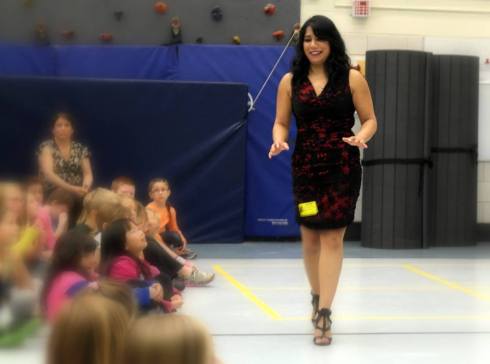
My Favorite Parts of Writing for Kids by Sudipta Bardhan-Quallen
So far, 2014 has been a really big year for me. I’ve had four picture books come out in the first four months of the year—DUCK DUCK MOOSE, ORANGUTANGLED, TYRANNOSAURUS WRECKS, and SNORING BEAUTY. I’ve had books selected for the Junior Library Guild, chosen as Amazon Big Spring Picks, and reviewed in the Wall Street Journal. I also joined the faculty of the Children’s Book Academy and began teaching writing.
Almost 12 years ago, I made the decision to leave graduate school in biology and begin writing books for children. In that time, there have been many highs and lows, though right now is certainly one of those highs. In light of the good fortune I’m experiencing right now, I wanted to share my three favorite parts of being a children’s author.
- Nobody tells me what to write about.
Every project I take up, I do so because it is something that interests me. I get to decide what to write about, and if that means spending one day on a concept book about the bond between a mother and a son, the next day on a picture book biography of Jackie Robinson, and the next on a story of some ducks whose best friend always MOOSES everything up, I can certainly do so (and I have!). It is a wonderful thing to have complete control over what I have to work on.
- I can work barefoot in my bed in my pajamas.
In the spirit of no one telling me what to do, I don’t even have a boss who makes me get dressed before I go to work! Some of my finest writing has come out of the left side of my bed, under the covers with my feet poking out.
- I get to create something out of nothing.
This one’s the key. In so many jobs, people follow instructions, push paper from one end of their desk to the other, execute against a task list. I’m not knocking those jobs at all—without them, our world doesn’t work. I’m just saying that it’s very rare to be able to start with nothing—just me and my imagination (and my laptop!) – and end up with something that is real and good, that didn’t exist before, that is entirely the product of my willing it into existence. Artists are driven to create. To be able to follow that imperative and still be able to support my family—well, that’s what I’m most grateful for. That’s my favorite part.
Happy Writing!
.

My Favorite Parts of Teaching and Agenting by Mira Reisberg
That part is easy–helping!! This helping boils down to helping make dreams come true, helping people improve their skills, helping to create a more level playing field with Children’s Book Academy scholarships, helping get great books and art out into the world created by great people, and finally helping bring more happiness and joy in the world (oh and having fun playing with people, words, and images).
Being a creative is hard. We live in a culture that generally undervalues and underpays us though this seems to be shifting a bit with new technologies where there is more of an emphasis on storytelling and image-driven messages.
But the payoff, and it’s big, even if it does take a long time for the money to come, is having a meaningful, heart-filled, and very fun life. I was talking with another agent this morning where we were helping each other out and it was just so lovely. That’s what we do in community-oriented organizations like PiBoIdMo, Rate Your Story, the Society of Children’s Book Writers and Illustrators, and the Children’s Book Academy, and this is another thing that I love about what I do.
In the old days, being a writer or illustrator meant slaving away in isolation. Now we have all these fantastic resources that not only help us with our craft, but also with our hearts providing support, resources, companionship, and practical assistance. So if you are feeling isolated or stuck, just reach out and ask for help. How amazing that we can do this. I certainly couldn’t be doing what I do at any other time in history. In some ways I love what I do a little too much and having a slightly addictive personality, tend to do too much. But this is a small price for all the joy and happiness that I get from being creative and helping others. So I guess this is another thing that I love about what I do, getting to live a wildly creative life and do good at the same time.
.
Tara’s Favorite Part of This TWO-FER
Years ago, I attended NJ-SCBWI events to learn about the business and craft of writing for kids. That’s where I met Sudipta. She has taught numerous picture book courses. She’s the most savvy and knowledgable instructor I know. She has taught me story techniques that no one else has ever divulged!
And now everyone has the chance to gain writerly wisdom from Sudipta. Along with Mira, she’s teaching the outrageously interactive online course: “From Storyteller to Exquisite Writer: The Pleasures and Craft of Poetic Techniques” starting May 19th. Mira and Suipta have nicknamed this course “The Missing Link” because it really is what most writers are missing in foundational knowledge. CLICK HERE for details and top secret discounts. This is the only time that Sudipta and Mira will be co-teaching this course together with the wonderful Mandy Yates assisting.
Thanks, Sudipta & Mira!
So now it’s your turn. What are your favorite parts of what you do?



By:
Tara Lazar,
on 11/19/2013
Blog:
Tara Lazar
(
Login to Add to MyJacketFlap)
JacketFlap tags:
Picture Books,
Literary Agents,
Mira Reisberg,
Ammi-Joan Paquette,
Marietta Zacker,
Danielle Smith,
Susan Hawk,
Tricia Lawrence,
Lori Kilkelly,
PiBoIdMo 2013,
Add a tag
I call the agents who participate in PiBoIdMo “agent prizes”, but let me make one thing clear: you do not get to bring them home with you.
Oh, sure, I know how you’d love to cuddle up with an agent, dress them in adorable footie pajamas and read them bedtime stories, but alas, they are remaining in their respective homes. For now. Who knows? If they really LOVE your ideas, maybe they’d like to snuggle beside you? But I digress…
At the conclusion of PiBoIdMo, on December 1st, I will post the “PiBo Pledge”. Leave a comment on the pledge post if you have completed the challenge with at least 30 ideas. You do not have to submit those ideas to prove that you have them. You’re on the honor system. It’s OK, I trust you.
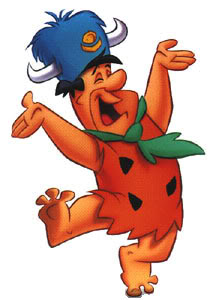 If you have “signed” the pledge by commenting AND you had also registered, then you are eligible for an “agent prize”—a.k.a. THE GRAND POOBAH OF PRIZES. You will get your 5 best ideas evaluated by a kidlit agent. They’ll tell you which ideas might be the best ones to pursue as manuscripts. (Or not.)
If you have “signed” the pledge by commenting AND you had also registered, then you are eligible for an “agent prize”—a.k.a. THE GRAND POOBAH OF PRIZES. You will get your 5 best ideas evaluated by a kidlit agent. They’ll tell you which ideas might be the best ones to pursue as manuscripts. (Or not.)
Don’t worry–you’ll get a few days to pick your 5 best ideas and flesh them out before sending to your assigned agent.
This year we have EIGHT EXCELLENT AGENTS participating! This means there are EIGHT GRAND PRIZES! I hope to add more, but these are who we have thus far.
Now…let me introduce you…let me make you smile… (wait, that’s let me entertain you…oopsie…but I bet you’re smiling anyway)…
.
Ammi-Joan Paquette, Erin Murphy Literary Agency (EMLA)
 Joan is a Senior Agent with EMLA, working from her home office in Massachusetts as the “East Coast branch” of the agency. She represents all forms of children’s and young adult literature, but is most excited by a strong lyrical voice, tight plotting with surprising twists and turns, and stories told with heart and resonance that will stand the test of time.
Joan is a Senior Agent with EMLA, working from her home office in Massachusetts as the “East Coast branch” of the agency. She represents all forms of children’s and young adult literature, but is most excited by a strong lyrical voice, tight plotting with surprising twists and turns, and stories told with heart and resonance that will stand the test of time.
An EMLA client herself, Joan is also the author of numerous books for children, most recently the picture books Ghost in the House (Candlewick, 2013) and Petey and Pru and the Hullabaloo (Clarion, 2013), and the novels Paradox (Random House, 2013) and Rules for Ghosting (Walker, 2013). When she is not on the phone, answering email, or writing, you will most likely find Joan curled up with a book. Or baking something delicious. Or talking about something delicious she’s baked. Really, after books and food, what else is there worth saying?
You can read more about Joan’s writing and agenting process here.
.
Tricia Lawrence, Erin Murphy Literary Agency (EMLA)
 Tricia is the “Pacific Northwest branch” of EMLA—born and raised in Oregon, and now lives in Seattle. After 18 years of working as a developmental and production-based editor (from kids book to college textbooks, but mostly college textbooks), she joined the EMLA team in March 2011 as a social media strategist.
Tricia is the “Pacific Northwest branch” of EMLA—born and raised in Oregon, and now lives in Seattle. After 18 years of working as a developmental and production-based editor (from kids book to college textbooks, but mostly college textbooks), she joined the EMLA team in March 2011 as a social media strategist.
As associate agent, Tricia represents picture books/chapter books that look at the world in a unique and unusual way, with characters that are alive both on and off the page, and middle grade and young adult fiction and nonfiction that offers strong worldbuilding, wounded narrators, and stories that grab a reader and won’t let go.
Tricia loves hiking, camping out in the woods, and collecting rocks. She loves BBC America and anything British. She has way too many books and not enough bookshelves. You can find Tricia’s writing about blogging, Tweeting, Facebooking, and other social media topics (for authors and the publishing industry at large) here and here.
.
Marietta Zacker, Nancy Gallt Literary Agency
 Marietta has experienced children’s books from every angle—teaching, marketing, publishing & bookselling. She thrives on working with authors who make readers feel their characters’ emotions and illustrators who add a different dimension to the story. She is also book curator at an independent toy store/bookstore. Read a recent publishing industry piece by Marietta here.
Marietta has experienced children’s books from every angle—teaching, marketing, publishing & bookselling. She thrives on working with authors who make readers feel their characters’ emotions and illustrators who add a different dimension to the story. She is also book curator at an independent toy store/bookstore. Read a recent publishing industry piece by Marietta here.
.
.
Danielle Smith, Foreword Literary
 Danielle Smith began her agent career at Foreword Literary Agents in 2013 where she represents picture books and middle grade authors and illustrators. Her enthusiasm for children’s literature began as a young child, but grew exponentially when her own two children were born and shortly thereafter she began reviewing books at her top rated children’s book review site There’s A Book. For more than five years she’s been involved professionally with books through print and online publications such as Women’s World and Parenting Magazine, as a member of the judging panel for The Cybils awards for fiction picture books, as well as locally by serving on the board of The Central Coast Writer’s Conference.
Danielle Smith began her agent career at Foreword Literary Agents in 2013 where she represents picture books and middle grade authors and illustrators. Her enthusiasm for children’s literature began as a young child, but grew exponentially when her own two children were born and shortly thereafter she began reviewing books at her top rated children’s book review site There’s A Book. For more than five years she’s been involved professionally with books through print and online publications such as Women’s World and Parenting Magazine, as a member of the judging panel for The Cybils awards for fiction picture books, as well as locally by serving on the board of The Central Coast Writer’s Conference.
Danielle is also a writer, represented by Pam van Hylckama Vlieg for her middle grade novel The Protectorate. She’s a member of SCBWI and can frequently be found on Twitter talking about anything from children’s books to the BBC’s Sherlock to her own parenting woes & joys.
Read more about Danielle here.
.
Mira Reisberg, Hummingbird Literary
 Mira Reisberg came to launch Hummingbird Literary following a 25-year history in the field of children’s literature working as an award-winning illustrator, a writer, editor, art director, designer, a children’s literature and art education professor, and a teacher/mentor to many now successful children’s book creatives.
Mira Reisberg came to launch Hummingbird Literary following a 25-year history in the field of children’s literature working as an award-winning illustrator, a writer, editor, art director, designer, a children’s literature and art education professor, and a teacher/mentor to many now successful children’s book creatives.
Her mission is to successfully represent all age-levels to create wonderful books that bring meaning and/or joy to children’s and young adult lives. Hummingbird Literary will have a limited number of clients so that Mira and her team can focus on building long-term careers and fruitful relationships.
Learn more about Mira and Hummingbird here.
.
Susan Hawk, The Bent Agency
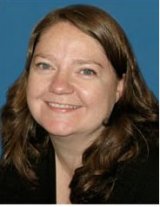 Susan Hawk represents authors who write for children of all ages, babies to teenage.
Susan Hawk represents authors who write for children of all ages, babies to teenage.
Susan comes to TBA from Children’s Book Marketing, where she worked for over 15 years, most recently as the Marketing Director at Henry Holt Books for Young Readers, and previous to that as the Library Marketing Director at Penguin Young Readers Group. She’s also worked as a children’s librarian and a bookseller.
Susan handles books for children exclusively: picture books, chapter books, middle grade and YA, fiction and non-fiction. She wants a book to stay with her long after she finishes reading, and she’s looking for powerful, original writing. She’s open to mystery, scifi, humor, boy books, historical, contemporary (really any genre). Her favorite projects live at the intersection of literary and commercial. In non-fiction she’s looking for books that relate to kid’s daily lives and their concerns with the world. In picture books, she’s looking particularly for author-illustrators, succinct but expressive texts, and characters as indelible as her childhood favorites Ferdinand, Madeline and George and Martha.
Read more about Susan here.
.
Lori Kilkelly, Rodeen Literary
 Lori Kilkelly is an agent with Rodeen Literary Management, founded by Paul Rodeen, formerly of Sterling Lord Literistic, in 2009. After working in sales for a number of years, Lori decided to follow her passion for books. She attended the Denver Publishing Institute, subsequently joining the agency as an intern in early 2010. Ascending the ranks from intern and reader to assistant, she worked with current and potential clients as well as editors and publishers. In early 2012 Lori took on the role of Social Media Manager, creating and maintaining the Rodeen Literary Facebook page as well as Twitter and Pinterest accounts, to provide promotional opportunities for RLM clients as well as keep interested parties informed about books, news and events involving RLM. In December 2012 she began representing her first client, Toni Yuly, and has subsequently taken on an additional four clients. She represents authors as well as illustrators and is actively seeking talented Middle Grade and Young Adult writers.
Lori Kilkelly is an agent with Rodeen Literary Management, founded by Paul Rodeen, formerly of Sterling Lord Literistic, in 2009. After working in sales for a number of years, Lori decided to follow her passion for books. She attended the Denver Publishing Institute, subsequently joining the agency as an intern in early 2010. Ascending the ranks from intern and reader to assistant, she worked with current and potential clients as well as editors and publishers. In early 2012 Lori took on the role of Social Media Manager, creating and maintaining the Rodeen Literary Facebook page as well as Twitter and Pinterest accounts, to provide promotional opportunities for RLM clients as well as keep interested parties informed about books, news and events involving RLM. In December 2012 she began representing her first client, Toni Yuly, and has subsequently taken on an additional four clients. She represents authors as well as illustrators and is actively seeking talented Middle Grade and Young Adult writers.
Please visit here for more on Lori and Rodeen Literary.
.
Sean McCarthy, McCarthy Literary
 Sean McCarthy began his publishing career as an editorial intern at Overlook Press and then moved over to the Sheldon Fogelman Agency. He worked as the submissions coordinator and permissions manager before becoming a full-time literary agent. Sean graduated from Macalester College with a degree in English-Creative Writing, and is grateful that he no longer has to spend his winters in Minnesota.
Sean McCarthy began his publishing career as an editorial intern at Overlook Press and then moved over to the Sheldon Fogelman Agency. He worked as the submissions coordinator and permissions manager before becoming a full-time literary agent. Sean graduated from Macalester College with a degree in English-Creative Writing, and is grateful that he no longer has to spend his winters in Minnesota.
He is drawn to flawed, multifaceted characters with devastatingly concise writing in YA, and boy-friendly mysteries or adventures in MG. In picture books, he looks more for unforgettable characters, off-beat humor, and especially clever endings. He is not currently interested in high fantasy, message-driven stories, or query letters that pose too many questions.
You can visit Sean here and follow him on Twitter here for his thoughts on publishing news, the inevitable hipsterfication of Astoria, and the Mets’ starting lineup.
.
Yay! So those are our agents, folks.
Now I should end on a humorous note, but you know, running PiBoIdMo just wipes the witty right outta me sometimes.
Maybe…yabba dabba do?


You’ve been waiting a long time…but here they finally are: the Mira Reisberg contest winners! I will contact those of you listed here with an exclusive email address to submit to Mira’s Hummmingbird Literary.
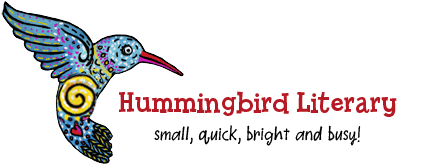
Donna Earnhardt
Mary Uhles
Vivian Kirkfield
Laura Renauld
Angie Karcher
There were SO MANY great marketing suggestions, I wanted to pick EVERYONE. You can imagine why it took me so long. Once again I want to thank the lovely and talented Mira Reisberg for sponsoring this contest, and best wishes to all the winners.
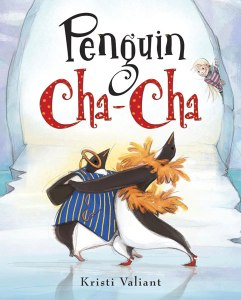
Next, the winner of Kristi Valiant’s PENGUIN CHA-CHA Prize Pack! It’s…
Pam Brunskill!
Be on the lookout for my email, Pam. And congrats!
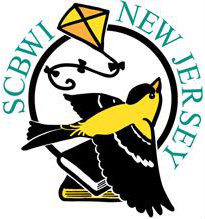
And while I have your attention, NJ-SCBWI just opened registration for a flurry of inspiring and entertaining fall events. I’ll be hosting a PiBoIdMo Kick-Off on October 1st in Manville, plus there’s two other PiBo and NaNoWriMo parties. I’ll also be teaching a picture book workshop at the Fall Craft Weekend on November 10th.
Check it all out at NJSCBWI.com and click “follow blog” so you don’t miss any future event announcements!
Happy writing to everyone! And stay tuned…some PiBoIdMo announcements are coming soon!



By:
Mark G. Mitchell,
on 5/25/2013
Blog:
How To Be A Children's Book Illustrator
(
Login to Add to MyJacketFlap)
JacketFlap tags:
art,
animators. children's book artists,
Mira Reisberg,
Erik Kuntz,
Mark Mitchell,
Jeff Crosby,
Bethany Hegedus,
Mary Sullivan,
Lindsey Stirling,
Children's book illustration. Children's book art. Children's book publishing. Children's Book Illus,
Cyntia Leitich Smith,
design,
drawing,
digital painting,
Jake Parker,
Greg Leitich Smith,
Julie Lake,
Amy Farrier,
children's book art,
children's book author-illustrators,
art instruction,
Shelley Ann Jackson,
Will Terry,
The Writing Barn,
painting,
Austin SCBWI,
Add a tag
So what is musician-performer-dancer-composer Lindsey Stirling doing on this blog about children’s book illustration? She’s an artist but she works in a different medium. She hasn’t published a children’s picture book. (Not yet, anyway, but give her time.) I’m sharing this video of her 2011 tune Shadows, because twenty-two million YouTube viewers are not wrong […]









 Mira Reisberg is an award-winning children’s book creative, a former kidlit university professor and a former literary agent. She is also the Director of the Children’s Book Academy and has taught many now highly successful authors and illustrators. Visit her at
Mira Reisberg is an award-winning children’s book creative, a former kidlit university professor and a former literary agent. She is also the Director of the Children’s Book Academy and has taught many now highly successful authors and illustrators. Visit her at  Mira is my Guest blogger for today’s post.
Mira is my Guest blogger for today’s post.  by
by 





 If you have “signed” the pledge by commenting AND you had also registered, then you are eligible for an “agent prize”—a.k.a. THE GRAND POOBAH OF PRIZES. You will get your 5 best ideas evaluated by a kidlit agent. They’ll tell you which ideas might be the best ones to pursue as manuscripts. (Or not.)
If you have “signed” the pledge by commenting AND you had also registered, then you are eligible for an “agent prize”—a.k.a. THE GRAND POOBAH OF PRIZES. You will get your 5 best ideas evaluated by a kidlit agent. They’ll tell you which ideas might be the best ones to pursue as manuscripts. (Or not.) Joan is a Senior Agent with EMLA, working from her home office in Massachusetts as the “East Coast branch” of the agency. She represents all forms of children’s and young adult literature, but is most excited by a strong lyrical voice, tight plotting with surprising twists and turns, and stories told with heart and resonance that will stand the test of time.
Joan is a Senior Agent with EMLA, working from her home office in Massachusetts as the “East Coast branch” of the agency. She represents all forms of children’s and young adult literature, but is most excited by a strong lyrical voice, tight plotting with surprising twists and turns, and stories told with heart and resonance that will stand the test of time. Tricia is the “Pacific Northwest branch” of EMLA—born and raised in Oregon, and now lives in Seattle. After 18 years of working as a developmental and production-based editor (from kids book to college textbooks, but mostly college textbooks), she joined the EMLA team in March 2011 as a social media strategist.
Tricia is the “Pacific Northwest branch” of EMLA—born and raised in Oregon, and now lives in Seattle. After 18 years of working as a developmental and production-based editor (from kids book to college textbooks, but mostly college textbooks), she joined the EMLA team in March 2011 as a social media strategist. Marietta has experienced children’s books from every angle—teaching, marketing, publishing & bookselling. She thrives on working with authors who make readers feel their characters’ emotions and illustrators who add a different dimension to the story. She is also book curator at an independent toy store/bookstore. Read a recent publishing industry piece by Marietta
Marietta has experienced children’s books from every angle—teaching, marketing, publishing & bookselling. She thrives on working with authors who make readers feel their characters’ emotions and illustrators who add a different dimension to the story. She is also book curator at an independent toy store/bookstore. Read a recent publishing industry piece by Marietta  Danielle Smith began her agent career at Foreword Literary Agents in 2013 where she represents picture books and middle grade authors and illustrators. Her enthusiasm for children’s literature began as a young child, but grew exponentially when her own two children were born and shortly thereafter she began reviewing books at her top rated children’s book review site There’s A Book. For more than five years she’s been involved professionally with books through print and online publications such as Women’s World and Parenting Magazine, as a member of the judging panel for The Cybils awards for fiction picture books, as well as locally by serving on the board of The Central Coast Writer’s Conference.
Danielle Smith began her agent career at Foreword Literary Agents in 2013 where she represents picture books and middle grade authors and illustrators. Her enthusiasm for children’s literature began as a young child, but grew exponentially when her own two children were born and shortly thereafter she began reviewing books at her top rated children’s book review site There’s A Book. For more than five years she’s been involved professionally with books through print and online publications such as Women’s World and Parenting Magazine, as a member of the judging panel for The Cybils awards for fiction picture books, as well as locally by serving on the board of The Central Coast Writer’s Conference. Mira Reisberg came to launch Hummingbird Literary following a 25-year history in the field of children’s literature working as an award-winning illustrator, a writer, editor, art director, designer, a children’s literature and art education professor, and a teacher/mentor to many now successful children’s book creatives.
Mira Reisberg came to launch Hummingbird Literary following a 25-year history in the field of children’s literature working as an award-winning illustrator, a writer, editor, art director, designer, a children’s literature and art education professor, and a teacher/mentor to many now successful children’s book creatives. Susan Hawk represents authors who write for children of all ages, babies to teenage.
Susan Hawk represents authors who write for children of all ages, babies to teenage. Lori Kilkelly is an agent with Rodeen Literary Management, founded by Paul Rodeen, formerly of Sterling Lord Literistic, in 2009. After working in sales for a number of years, Lori decided to follow her passion for books. She attended the Denver Publishing Institute, subsequently joining the agency as an intern in early 2010. Ascending the ranks from intern and reader to assistant, she worked with current and potential clients as well as editors and publishers. In early 2012 Lori took on the role of Social Media Manager, creating and maintaining the Rodeen Literary Facebook page as well as Twitter and Pinterest accounts, to provide promotional opportunities for RLM clients as well as keep interested parties informed about books, news and events involving RLM. In December 2012 she began representing her first client, Toni Yuly, and has subsequently taken on an additional four clients. She represents authors as well as illustrators and is actively seeking talented Middle Grade and Young Adult writers.
Lori Kilkelly is an agent with Rodeen Literary Management, founded by Paul Rodeen, formerly of Sterling Lord Literistic, in 2009. After working in sales for a number of years, Lori decided to follow her passion for books. She attended the Denver Publishing Institute, subsequently joining the agency as an intern in early 2010. Ascending the ranks from intern and reader to assistant, she worked with current and potential clients as well as editors and publishers. In early 2012 Lori took on the role of Social Media Manager, creating and maintaining the Rodeen Literary Facebook page as well as Twitter and Pinterest accounts, to provide promotional opportunities for RLM clients as well as keep interested parties informed about books, news and events involving RLM. In December 2012 she began representing her first client, Toni Yuly, and has subsequently taken on an additional four clients. She represents authors as well as illustrators and is actively seeking talented Middle Grade and Young Adult writers. Sean McCarthy began his publishing career as an editorial intern at Overlook Press and then moved over to the Sheldon Fogelman Agency. He worked as the submissions coordinator and permissions manager before becoming a full-time literary agent. Sean graduated from Macalester College with a degree in English-Creative Writing, and is grateful that he no longer has to spend his winters in Minnesota.
Sean McCarthy began his publishing career as an editorial intern at Overlook Press and then moved over to the Sheldon Fogelman Agency. He worked as the submissions coordinator and permissions manager before becoming a full-time literary agent. Sean graduated from Macalester College with a degree in English-Creative Writing, and is grateful that he no longer has to spend his winters in Minnesota.


Fantastic post. Thanks!
Ditto what Becky said. Very informative, easy-to-follow post. Thanks, ladies!
I miss reading these each day, thanks so much for the post!
This is EXACTLY what I’m dealing with today. Thank you universe and @taralazar
So anxious to start this course. I’m rewriting a ms I cut way back thinking it was a PB. Wrong. :-) Now adding detail to enhance what I have. Fun.
Fantastic post! I’ve linked it in the Writers’ Rumpus resources page, and put it on our FB page too. Plus I emailed it to the whole critique group list. THANK YOU!
Excellent as usual.
Great post! It really is a difficult call sometimes. These are great pointers.
Reblogged this on make every word count.
Thank you, Tara & Mira! Great post. I have a client to send to you.
Oops! And Hillary! I just don’t know you yet… Glad to meet you!